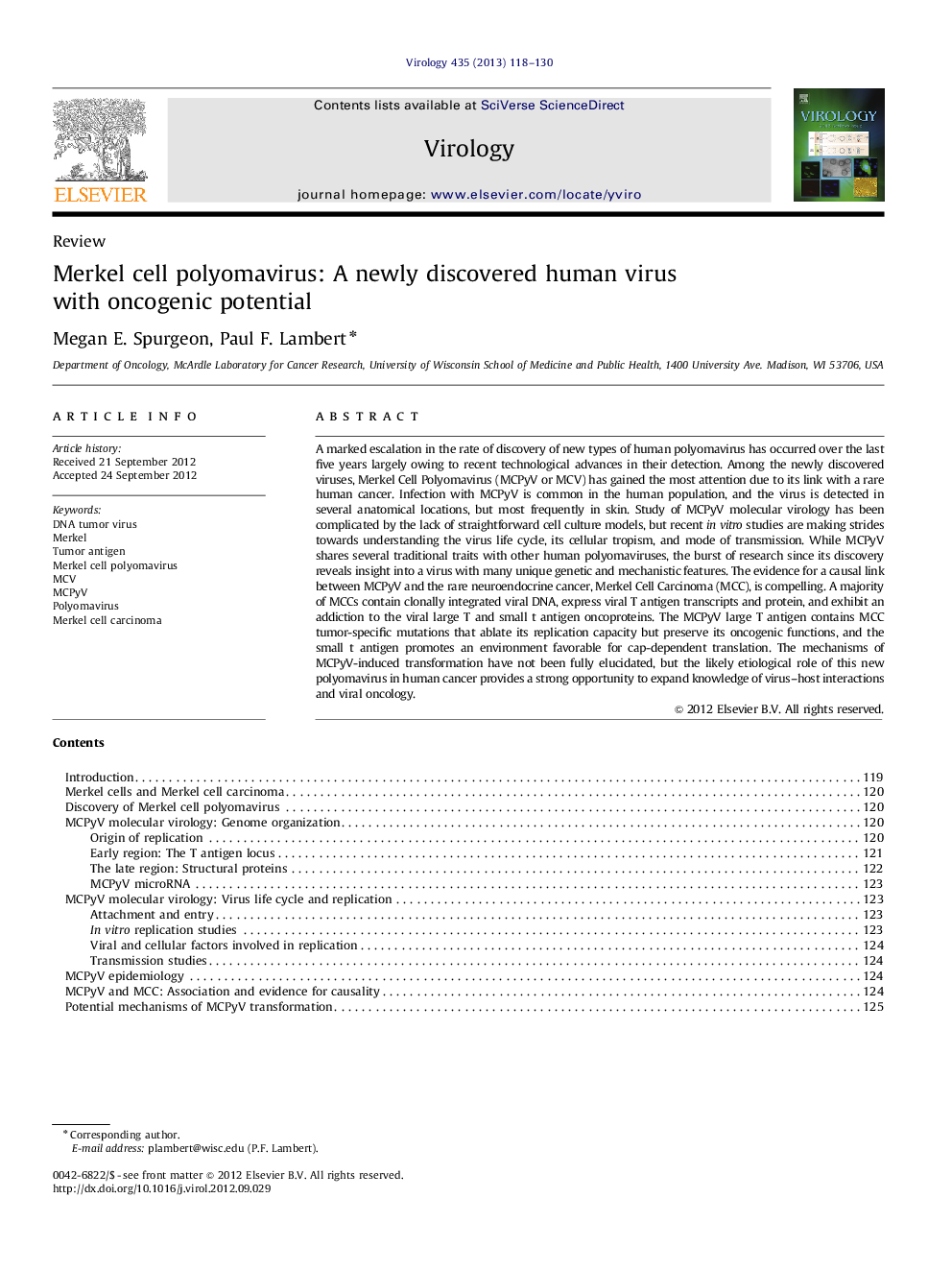| Article ID | Journal | Published Year | Pages | File Type |
|---|---|---|---|---|
| 3424249 | Virology | 2013 | 13 Pages |
A marked escalation in the rate of discovery of new types of human polyomavirus has occurred over the last five years largely owing to recent technological advances in their detection. Among the newly discovered viruses, Merkel Cell Polyomavirus (MCPyV or MCV) has gained the most attention due to its link with a rare human cancer. Infection with MCPyV is common in the human population, and the virus is detected in several anatomical locations, but most frequently in skin. Study of MCPyV molecular virology has been complicated by the lack of straightforward cell culture models, but recent in vitro studies are making strides towards understanding the virus life cycle, its cellular tropism, and mode of transmission. While MCPyV shares several traditional traits with other human polyomaviruses, the burst of research since its discovery reveals insight into a virus with many unique genetic and mechanistic features. The evidence for a causal link between MCPyV and the rare neuroendocrine cancer, Merkel Cell Carcinoma (MCC), is compelling. A majority of MCCs contain clonally integrated viral DNA, express viral T antigen transcripts and protein, and exhibit an addiction to the viral large T and small t antigen oncoproteins. The MCPyV large T antigen contains MCC tumor-specific mutations that ablate its replication capacity but preserve its oncogenic functions, and the small t antigen promotes an environment favorable for cap-dependent translation. The mechanisms of MCPyV-induced transformation have not been fully elucidated, but the likely etiological role of this new polyomavirus in human cancer provides a strong opportunity to expand knowledge of virus–host interactions and viral oncology.
► Merkel Cell Polyomavirus (MCPyV) is first PyV clearly associated with human cancer. ► MCPyV is found integrated in Merkel Cell Carcinoma (MCC). ► MCPyV small and large tumor antigens (sT and LT) are expressed in MCC. ► In MCC, LT is mutated, looses its DNA helicase activity but retains binding to pRb. ► Amongst human polyomaviruses, McPyV has some unique characteristics.
